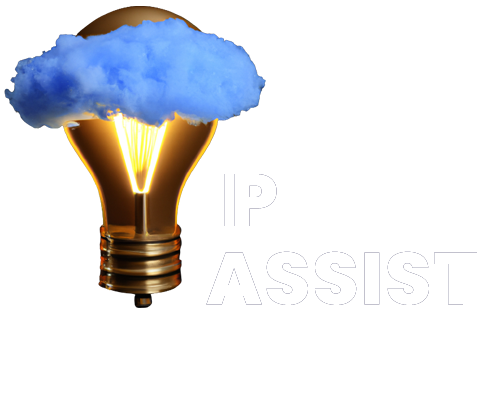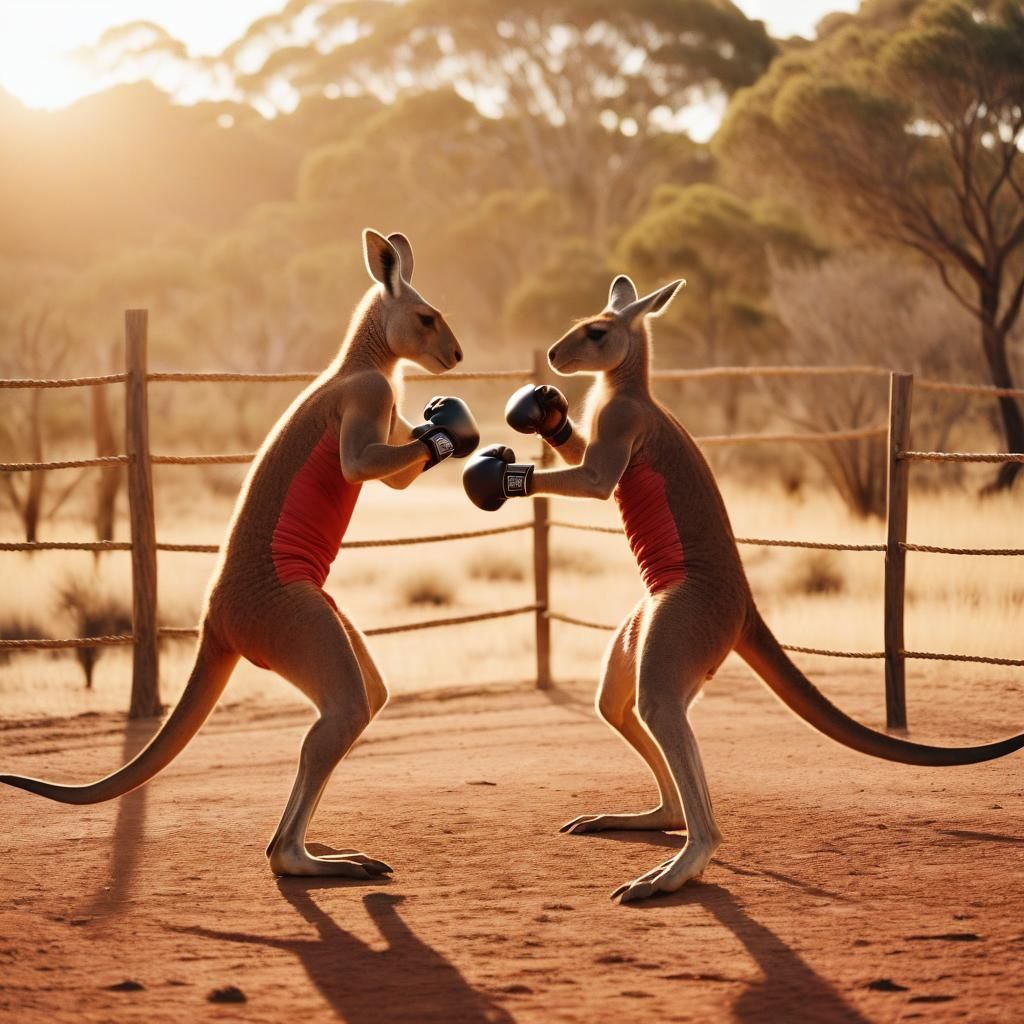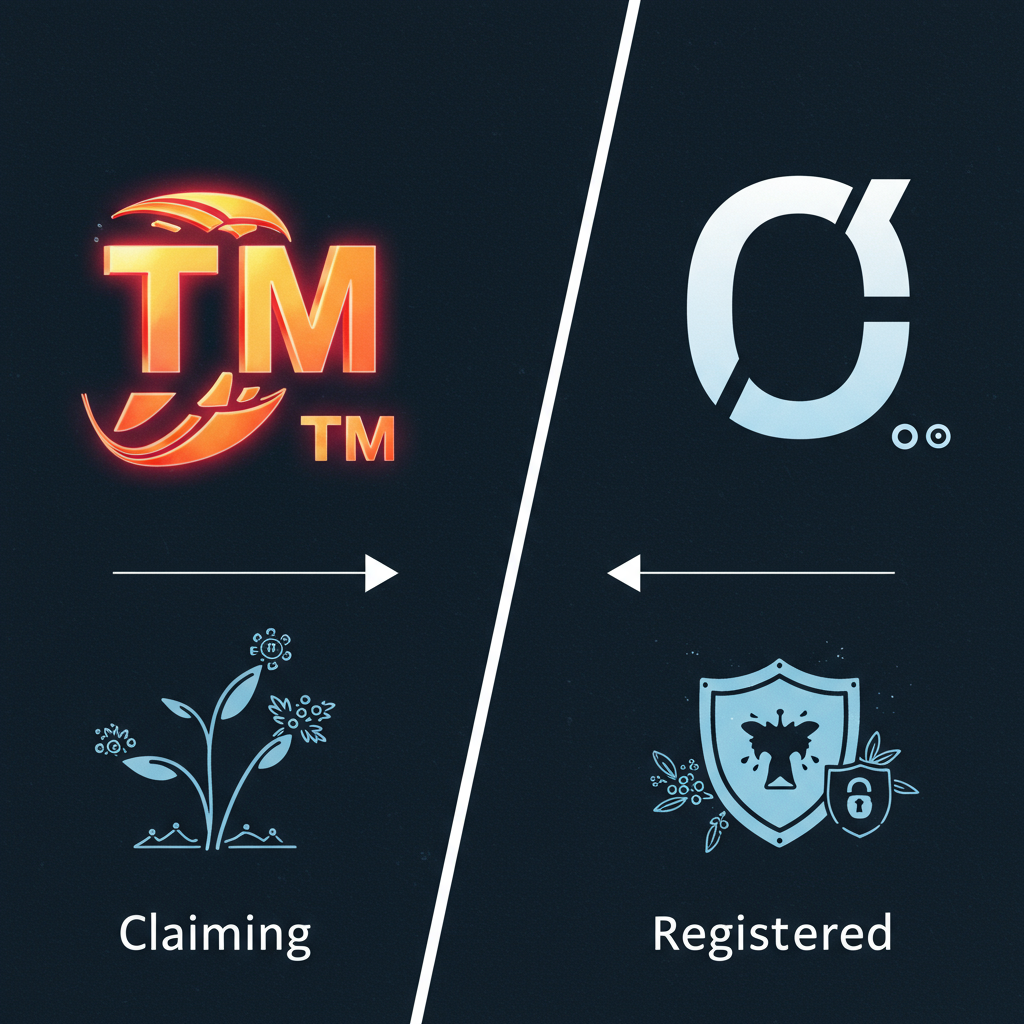Who Can Own a Trademark?
Unlocking Your Brand's Powerhouse

Ever wondered who truly pulls the strings behind the world's most iconic brands? Is it the visionary founder, the powerhouse corporation, or maybe even an artistic collective? When it comes to trademarks, the answer might surprise you, and understanding it is absolutely crucial for anyone looking to build a lasting legacy.
Your brand, whether it's a catchy name, a distinctive logo, or that unforgettable jingle, is more than just an identity; it's a powerhouse asset. It's what makes you stand out in the crowded marketplace, builds trust with your customers, and ultimately, drives your success. Owning a trademark is like holding the deeds to your brand's castle – it gives you the exclusive right to use, protect, and profit from it.
But who gets to be the legal custodian of this invaluable asset? Is it always the big corporations, or can a single Aussie entrepreneur stake their claim? This article will cut through the legal jargon and lay out precisely who can own a trademark, the various ways ownership can be structured, and why getting it right from the get-go is a game-changer for your brand's future.
Key Takeaways:
- Broad Eligibility: Individuals, businesses (sole proprietors, partnerships, corporations), non-profits, and even government entities can own trademarks.
- Legal Personhood is Key: Generally, the trademark owner must be a legally recognised entity.
- "First-to-Use" vs. "First-to-File": Ownership rules vary significantly by country, impacting who gains rights first.
- Strategic Ownership: Deciding who owns the trademark (e.g., individual vs. company) has significant legal, tax, and transfer implications.
- International Considerations: Foreign applicants can own trademarks globally, often simplified by treaties like the Madrid Protocol.
The Legal and Business Benefits of Owning a Trademark
Before we deep-dive into who can own one, let's briefly unpack why trademark ownership matters so much. It's not just a fancy certificate; it's your brand's legal superpower.
- Exclusive Rights: Own a trademark, and you get the exclusive right to use it for the goods and services it covers. This means no one else can legally use a confusingly similar mark to trick your customers.
- Brand Recognition & Value: A registered trademark becomes a recognised symbol of quality and origin, building immense goodwill and commercial value for your brand.
- Legal Protection: It gives you the legal teeth to stop infringers. If someone tries to ride on your coattails, you have clear legal grounds to take action.
- Licensing & Monetisation: You can license your trademark to others, allowing them to use it under specific terms, opening up new revenue streams. Think of a famous Aussie sports team licensing their logo for merchandise – pure gold!
- Asset for Sale or Investment: A strong, registered trademark is a valuable intellectual property asset that can be sold, inherited, or used as collateral for loans.
Simply put, owning a trademark is like securing the fortress around your brand. It gives you control, power, and a clear path to commercial success.
General Eligibility for Trademark Ownership: The Big Picture
The good news? Trademark ownership isn't exclusive to the corporate giants. In fact, a wide array of "persons" or entities can legally own a trademark.
Broadly speaking, a trademark can be owned by:
- Individuals: This includes sole proprietors, freelancers, artists, and inventors. If you're a single person running your own show, you can absolutely own your brand's trademark.
- Businesses: From small partnerships to massive multinational corporations, businesses are common trademark owners.
- Organisations: This covers everything from non-profits and charities to government bodies and associations.
Whether you're a local tradie with a unique business name or a burgeoning tech startup, the door to trademark ownership is wide open, provided you meet the core legal requirements of a distinct and non-descriptive mark.
Domestic vs. International Applicants
Crucially, trademark ownership isn't limited by borders.
- Domestic Applicants: If you're an Australian individual or business, you can apply for and own an Australian trademark with IP Australia.
- International Applicants: Foreign individuals and entities can also apply for and own trademarks in Australia, and vice-versa. International treaties like the Madrid Protocol (which we talked about in the last article) and the Paris Convention make this process smoother, ensuring that a foreign applicant generally receives the same treatment as a domestic one. This global reciprocity is essential for today's interconnected world.
The Role of First-to-Use vs. First-to-File Systems (with Country-Specific Examples)
As we learned, this is a key determinant of who initially gains trademark rights.
- First-to-Use Systems (e.g., Australia, United States): In these jurisdictions, trademark rights are primarily acquired by the first person or entity to genuinely use the mark in commerce for specific goods or services. Registration strengthens these "common law" rights and provides public notice, but prior use is paramount. So, if you were the first to use "Gareth's Gum Nuts" for your artisanal sweets in Australia, you'd likely have a stronger claim than someone who registered it later without prior use.
- First-to-File Systems (e.g., China, European Union): Here, the legal landscape is different. Rights are typically granted to the first person or entity to apply for registration, regardless of who used the mark first. This system prioritises speed and diligence in filing. In China, for instance, if a "trademark squatter" registers your famous brand name before you do, they legally own it in China, even if you've been using it globally for decades. This is why understanding this distinction is absolutely vital for international expansion.
Trademark Ownership by Different Types of Entities: Digging Deeper
Let's break down ownership by the specific types of entities that typically hold trademark rights.
A. Individuals as Trademark Owners
Yes, a single person can be the proud owner of a trademark!
- How Sole Proprietors and Entrepreneurs Can Register Trademarks: If you operate as a sole trader or simply as an individual creator, you can file a trademark application in your own name. This is common for artists, authors, consultants, or small business owners who haven't yet incorporated. For example, a renowned Aussie chef might trademark their signature restaurant name or a unique recipe brand under their personal name.
- Examples of Famous Trademarks Owned by Individuals: While many ultimately transfer to companies, some famous marks started or are still owned by individuals. Think of a famous author's pen name, or a well-known artist's signature logo. Their personal brand becomes their trademark.
B. Businesses and Corporations
This is where the bulk of trademark ownership sits.
- How Companies Protect Brand Names, Logos, and Product Names: Corporations, from small Pty Ltd companies to massive public enterprises, register trademarks for their company names, product lines, service names, logos, slogans, and more. This protects their entire brand ecosystem.
- Why Businesses Often Own Trademarks Instead of Individual Founders: There are several compelling reasons:
- Longevity & Continuity: Companies have perpetual existence, unlike individuals. If a founder retires or passes away, the trademark remains with the company, ensuring business continuity.
- Legal Separation: Ownership by a company provides a clear legal distinction between the business's assets and the personal assets of the founders, offering liability protection.
- Investment & Sale: It simplifies attracting investment or selling the business. Investors and buyers prefer to acquire a business where the core assets, like trademarks, are clearly owned by the entity itself.
- Tax Benefits: Depending on jurisdiction, there can be tax advantages to owning IP within a corporate structure.
- Assigning Trademark Ownership Within a Company (e.g., Parent Companies vs. Subsidiaries): It's common for a parent company to own all trademarks, then license them to various subsidiaries around the world. This centralises control and management of the brand portfolio. Alternatively, larger groups might have specific subsidiaries own trademarks relevant to their distinct operations. Proper legal assignment documents are crucial for transferring ownership.
C. Partnerships and Joint Ventures
When two or more parties team up, trademark ownership needs careful consideration.
- Co-owning Trademarks: How It Works Legally: Partnerships can register trademarks in the name of the partnership itself. If individual partners contribute separate marks, a robust partnership agreement is essential to clarify ownership, usage rights, and what happens if the partnership dissolves.
- Potential Risks and Legal Disputes in Shared Ownership: Without clear agreements, shared ownership can be a breeding ground for disputes. Imagine two mates who start a brewery, trademark their beer name, then fall out. Without a proper agreement, who gets to keep using the name? This is where good legal advice upfront saves a world of pain later.
D. Nonprofits, NGOs, and Government Entities
It's not just commercial ventures that need brand protection.
- How Organizations Trademark Slogans, Logos, and Names: Non-profit organisations, charities, and NGOs trademark their names, logos, and slogans to protect their identity, reputation, and fundraising efforts. This prevents others from confusing the public or misusing their goodwill.
- Examples (e.g., UNICEF®, Red Cross®, Olympic Rings®): These are prime examples of globally recognised marks owned by non-commercial entities, demonstrating the importance of brand integrity for organisations focused on public good or major events. Even government entities, like tourism boards or specific departments, will trademark their official logos and slogans.
E. Foreign Applicants and International Trademark Ownership
Absolutely, foreign entities can own trademarks in another country!
- Can Foreign Entities Own Trademarks in Another Country?: Yes, and it's a common practice for international businesses. An Australian company can own a trademark in the US, China, or the EU, and vice versa.
- How International Treaties (Madrid Protocol, Paris Convention) Simplify Ownership: As discussed, these treaties are instrumental. The Madrid Protocol allows a single international application originating from your home country (like Australia) to designate multiple member countries for protection. The Paris Convention ensures "national treatment," meaning you get the same rights as a local applicant.
- Country-Specific Rules (U.S., EU, UK, Australia, China, etc.): While treaties simplify application, the actual grant of rights and the rules of ownership still depend on each country's individual laws (e.g., first-to-use vs. first-to-file). This is why a global strategy is crucial.
Trademark Ownership Rules in Key Countries: A Snapshot
Let's revisit a few key jurisdictions to highlight ownership nuances.
A. United States (USPTO)
- First-to-Use System: Proving Use in Commerce: Ownership is rooted in actual use. To maintain a federal registration, you must file a "Declaration of Use" proving that your trademark is still actively being used in commerce.
- How Trademark Assignments and Transfers Work: Trademarks can be assigned (sold or transferred) to another entity. This requires a written assignment document recorded with the USPTO. This is common when a business is sold.
B. European Union (EUIPO)
- Who Qualifies for an EU Trademark (EUTM)?: Any natural or legal person (individuals, companies) from an EU member state, or a country that is a party to the Paris Convention or has reciprocity with the EU, can apply for an EUTM.
- Can Non-EU Businesses Register Trademarks?: Yes. Through the Madrid Protocol or by directly filing with the EUIPO (often via an EU-based attorney), non-EU businesses can secure an EUTM, giving them protection across the entire bloc.
C. United Kingdom (UKIPO)
- Post-Brexit Rules for International Applicants: Post-Brexit, non-UK businesses can still apply for UK trademarks directly with the UKIPO or via the Madrid Protocol (designating the UK). There's no longer automatic EUTM coverage.
- UK Businesses vs. Foreign Entity Registrations: The process and rights are largely the same for both domestic and foreign entities, upholding the principle of national treatment.
D. China (CNIPA)
- First-to-File System: Why Early Registration is Crucial: As highlighted, China's strict first-to-file rule means whoever files first typically owns the mark. This applies equally to foreign and domestic applicants. Proactive registration is key to avoiding trademark squatting.
- Common Issues with Trademark Squatting: This is a persistent headache. Well-known foreign brands often find their trademarks registered by squatters before they even enter the market. Recovering these can be costly and protracted.
E. Australia (IP Australia)
- Who is Eligible to Own a Trademark?: Individuals, companies, partnerships, trusts, and associations are all eligible to own trademarks with IP Australia. You must be a "legal person" or entity.
- Local vs. International Applicants: Both local Australian entities and foreign applicants can apply for and own trademarks here, either directly or through the Madrid Protocol.
- Special Protections for Indigenous Businesses and Cultural Trademarks: IP Australia is increasingly focused on providing specific avenues and considerations for the protection of Indigenous names, symbols, and cultural expressions, acknowledging their unique heritage value.
Special Cases: Can AI, Robots, or Non-Humans Own a Trademark?
This is where IP law gets fascinating and, frankly, a bit sci-fi! As artificial intelligence becomes more sophisticated, generating creative works and even brand concepts, the question arises: can an AI own a trademark?
- The Debate Over AI-Generated Trademarks: Currently, the consensus in most major jurisdictions is that a trademark owner must be a legal person (human or a legally constituted entity like a company). An AI cannot, at present, be the owner. The human or entity behind the AI's development, or the entity that uses the AI-generated mark in commerce, would typically be considered the owner. This is a rapidly evolving area, and legal frameworks are still catching up to the capabilities of AI.
- Legal Restrictions on Non-Human Trademark Ownership: Most IP laws require an applicant to be a legal person capable of entering into contracts and bearing legal responsibilities. AI, animals, or inanimate objects don't fit this bill. While an animal might be the face of a brand, the trademark itself would be owned by its human owner or the associated business.
Transferring and Selling Trademark Ownership: Your Brand's Journey
Trademarks, like other valuable assets, can change hands.
- Can Trademarks Be Sold or Reassigned?: Absolutely. Trademarks are valuable pieces of property and can be bought, sold, or gifted (assigned) to another entity. This is common when a business is acquired, or a brand is licensed to a different company.
- Trademark Licensing vs. Full Ownership Transfers:
- Licensing: You (the trademark owner) grant another party permission to use your trademark under specific conditions, retaining ownership. Think of a franchise agreement where the franchisor licenses their brand name and system.
- Full Ownership Transfer (Assignment): The original owner completely sells or assigns all rights and ownership of the trademark to a new owner. This is typically done via a formal assignment agreement and needs to be recorded with the relevant IP office (e.g., IP Australia).
- Legal Agreements Required for a Trademark Sale: A formal, written assignment agreement is crucial. It details the transfer of ownership, the specific trademark(s) being transferred, and any associated goodwill. Recording this assignment with the relevant IP office is vital to ensure the public record of ownership is accurate and enforceable.
Common Mistakes in Trademark Ownership: Avoid These Pitfalls!
Getting trademark ownership wrong can lead to costly headaches down the track.
- Registering a Trademark Under the Wrong Entity: This is a surprisingly common mistake. For instance, a founder might register a trademark in their personal name, but the business operations and assets are under a company name. This creates a disconnect, complicates future sales or investment, and can lead to tax implications. Always register the trademark in the name of the entity that will primarily own and exploit the brand commercially.
- Failing to Update Ownership Records: If you sell your business or reassign your trademark, failing to update the ownership records with the relevant IP office (like IP Australia) can create confusion and legal vulnerability. Ensure all transfers are properly recorded.
- Not Considering International Ownership Protections: Many businesses focus only on domestic registration, overlooking crucial international markets. This leaves them exposed to squatting and infringement when they try to expand globally. Always think about your future market reach.
Your Brand's Ownership Blueprint
Understanding who can own a trademark is fundamental to building a robust and protected brand. From individual entrepreneurs to global corporations, the path to ownership is open, but navigating the nuances of legal entity types, local laws, and international considerations is key.
Your trademark is more than just a word or a logo; it's the core of your brand's identity and future value. Getting its ownership structure right from the beginning is a strategic decision that empowers you to control your brand's destiny.
What steps should businesses and individuals take to secure proper trademark ownership?
- Identify the Correct Owner: Determine whether the trademark should be owned by an individual, a sole proprietorship, a partnership, or an incorporated company. Choose the entity that aligns with your business structure and long-term goals.
- Conduct Comprehensive Searches: Before filing, ensure your chosen mark is available and distinctive.
- File Strategically: Register your trademark with IP Australia (and internationally via Madrid Protocol if needed) in the name of the correct legal entity.
- Document All Transfers: If ownership changes (e.g., selling your business, internal restructure), ensure all assignments are legally documented and recorded with the relevant IP offices.
- Seek Professional Advice: Don't go it alone. An experienced IP professional can guide you through the complexities of ownership, helping you make informed decisions and avoid costly errors.
By laying this solid foundation, you're not just registering a mark; you're securing the very heart of your brand and setting it up for
enduring success.
FAQs:
Q1: Can a freelancer or sole trader own a trademark?
A: Absolutely! As an individual or sole proprietor, you can own a trademark for your business name, logo, or services, registered directly in your personal name.
Q2: Why should a company own a trademark instead of its founder?
A: Company ownership provides longevity, legal separation from personal assets, simplifies investment or sale of the business, and can offer tax advantages. It ensures the brand's legal rights remain with the ongoing entity.
Q3: Can a trademark be owned by more than one person or entity?
A: Yes, trademarks can be co-owned, for example, by partners in a partnership. However, it's crucial to have a clear legal agreement outlining rights, responsibilities, and dispute resolution to avoid future conflicts.
Q4: How does trademark ownership impact international expansion?
A: Understanding ownership rules in different countries (especially "first-to-file" vs. "first-to-use" systems) is vital. Foreign entities can own trademarks globally, often streamlined by treaties like the Madrid Protocol, but local filing rules still apply.
Q5: What happens if I sell my business? Does the trademark go with it?
A: Not automatically. While often part of a business sale, the trademark itself needs to be formally "assigned" (transferred) in writing to the new owner. This assignment should then be recorded with the relevant intellectual property office (like IP Australia) to update the public record of ownership.











